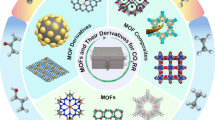Abstract
Carbon-supported PtCu and PtSn (both with an atomic ratio of 3:1) nanoparticles were prepared by reducing Pt, Sn, and Cu precursors via refluxing in ethanol. They were characterized using energy-dispersive X-ray spectroscopy (EDX), X-ray diffraction (XRD), and transmission electron microscopy (TEM). X-ray diffraction indicated that the lattice parameter of Pt increases with the addition of Sn and decreases with the addition of Cu, indicating that both PtCu and PtSn are solid solutions. EDX analysis revealed that the compositions of these materials are close to their nominal compositions, while TEM showed that both materials presented a homogeneous particle distribution on the carbon support and low particle agglomeration. Electrochemical experiments indicated that all of the materials are electrochemically active with respect to methanol, ethanol, propanol, and butanol oxidation in H2SO4 solution. The electrochemical measurements also showed that PtSn is more active in ethanol oxidation, whereas PtCu is more active in methanol oxidation. Both materials showed similar electrooxidative activities towards propanol and butanol, and they presented higher electrochemical acidities than pure platinum for alcohol oxidation.







Similar content being viewed by others
References
Kamarudin MZF, Mararudin SK, Masdar MS, Daud (2013) Int J Hydrogen Energy 38:9438–9453
Bonesi A, Asteazaran M, Moreno MS, Zampieri G, Bengio S, Triaca W, Castro Luna AM (2013) J Solid State Electrochem 17:1823–1829
Linares JJ, Zignani SC, Rocha TA, Gonzalez ER (2013) J Appl Electrochem 43:147–158
Pearson A, O’Mullane AP (2015) Chem Commun 51:11297–11300
Shao MH, Adzic RR (2005) Electrochim Acta 50:2415–2422
Silva JCM, Anea B, de Souza RFB, Assumpção MHMT, Calegaro ML, Neto AO, Santos MC (2013) J Braz Chem Soc 24:1553–1560
Coutanceau C, Brimaud S, Lamy C, Leger J-M, Dubai L, Rousseau S, Vigier F (2008) Electrochim Acta 53:6865–6880
Ciapina E, Gonzalez ER (2009) J Electroanal Chem 626:130–142
Asgardi J, Calderon JC, Alcaide F, Quereja A, Calvillo L, Lazaro MJ, Garcia G, Pastor E (2015) Appl Catal B Environ 168:33–41
de Souza RFB, Silva JCM, Assumpção MHT, Neto AO, Santos MC (2014) Electrochim Acta 117:292–298
Colmati F, Antolini E, Gonzalez ER (2005) Electrochim Acta 50:5496–5503
Liu Z, Guo B, Hong L, Lim TH (2006) Electrochem Commun 8:83–90
Aricò AS, Creti P, Antonucci PL, Antonucci V (1998) J Electrochem Soc 2:66–68
Lamy C, Belgsir EM, Léger JM (2001) J Appl Electrochem 31:799–809
Zhou WJ, Song SQ, Li WZ, Zhou ZH, Sun GQ, Xin Q, Douvartzides S, Tsiakaras P (2005) J Power Souces 140:50–58
Kowal A, Gojkovic SL, Lee K-S, Olszewski P, Sung Y-E (2009) Electrochem Commun 11:724–727
Meenakshi S, Sridhar P, Pitchumani S (2014) RCS Adv 4:44386–44393
Queiroz AC, Silva WO, Rodrigues IA, Lima FHB (2014) Appl Catal B Environ 160–161:423–435
Na L, Zhao TS, Li YS (2015) Renew Sust Energ Rev 50:1462–1468
Beyhan S, Coutanceau C, Leger J-M, Napporn TW, Kardirgan F (2013) Int J Hydrogen Energy 38:6830–6841
Lee M, Hwang Y, Yun k-H, Chung Y-C (2015) J Power Sources 288:296–301
Liu J, Zhao O, Chem S, Yi L, Wang X, Wei W (2015) Electrochim Acta 171:96–104
Coleman EJ, Chowdhury MH, Co AC (2015) ACS Catal 5:1245–1253
Carbonio EA, Colmati F, Ciapina EG, Pereira ME, Gonzalez ER (2010) J Braz Chem Soc 21:590–602
Huang M, Jiang Y, Jin C, Ren J, Zhou Z, Guan L (2014) Electrochim Acta 125:29–37
Magalhães MM, Colmati F (2014) J Braz Chem Soc 25:1317–1325
Colmati F, Antolini E, Gonzalez ER (2007) J Electrochem Soc 154:B39–B47
Román-Martinez MC, Cazorla-Amorós D, Miguel S, Scelza O (2004) J Jpn Pet Inst 47:164–178
Tripković AV, Popović KDJ, Lović JD (2001) Electrochim Acta 46:3163–3173
Habibi B, Dadashpour (2013) Electrochim Acta 88:157–164
Watanabe M, Motoo S (1975) J Electroanal Chem 60:275–279
Lee C-G, Umeda M, Uchida I (2006) J Power Sources 160:78–89
Li N-H, Sun S-G (1998) J Electroanal Chem 448:5–15
Li N-H, Sun S-G (1997) J Electroanal Chem 436:65–72
Colmati F, Antolini E, Gonzalez ER (2007) Appl Catal B Environ 73:106–115
Liu L, Samjeské G, Takao S, Nagasawa K, Iwasawa Y (2014) J Power Souces 253:1–8
Ascarelli P, Contini V, Giorgi R (2002) J Appl Phys 91:4556–4561
Starz KA, Auer E, Lehmann T, Zuber R (1999) J Power Sources 84:167–172
Antolini E, Colmati F, Gonzalez ER (2009) J Power Sources 193:555–561
Jow J-J, Hsieh L-Y, Cho H-P, Chen H-R, Kuo C-W (2013) J Ind Eng Chem 19:1730–1734
Acknowledgments
The authors would like to thank the Conselho Nacional de Desenvolvimento Científico e Tecnológico (CNPq, Proc. 554569/2010-8 and Proc. 475609/2008-5) for financial support as well as the Coordenação de Aperfeiçoamento de Pessoal de Nível Superior (CAPES) for granting our scholarship. We would also like to thank Tatiane Oliveira dos Santos from the Microscopy Laboratory (LABMIC) of the Federal University of Goiás, Goiânia, Brazil, for permitting the use of the microscope (a JEM-2010 HRTEM microscope, JEOL, Tokyo, Japan).
Author information
Authors and Affiliations
Corresponding author
Ethics declarations
Conflict of interest
The authors state that there is no conflict of interest associated with this work.
Appendix
Appendix
As illustrated in Fig. 8, the alcohol oxidation current was relatively stable at 1800 s, except for isopropanol. This behavior can be attributed to differences in the adsorption of the alcohols on the electrode surface. Some studies have found that small and linear alcohols such as methanol and ethanol are adsorbed at a platinum electrode in an acidic medium via the α-carbon in the alcohol molecule. Propanol and butanol are also adsorbed in this manner, but the α-carbon is shielded by methyl groups in isopropanol, so only weak adsorption occurs on the Pt surface and the oxidation current does not stabilize within 1800 s. At this section, the scale of the y-axis of the graphics was not similar for all figures to emphasize the behavior of the curves with time once the current values are very different.
Rights and permissions
About this article
Cite this article
dos Reis, R.G.C.S., Colmati, F. Electrochemical alcohol oxidation: a comparative study of the behavior of methanol, ethanol, propanol, and butanol on carbon-supported PtSn, PtCu, and Pt nanoparticles. J Solid State Electrochem 20, 2559–2567 (2016). https://doi.org/10.1007/s10008-016-3323-3
Received:
Revised:
Accepted:
Published:
Issue Date:
DOI: https://doi.org/10.1007/s10008-016-3323-3





